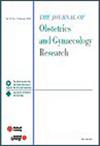Assessment of intra-amniotic colonization based on copy numbers of 16S ribosomal deoxyribonucleic acid: A diagnostic and prognostic study
Abstract
Aim
This study aimed to assess amniotic fluid bacterial load using the copy number of 16S ribosomal deoxyribonucleic acid and to clarify its association with perinatal outcomes.
Methods
This retrospective diagnostic and prognostic study included 63 patients with preterm labor and suspected intra-amniotic infection who underwent amniocentesis before 34 weeks of gestation. We measured the copy number of 16S ribosomal deoxyribonucleic acid in 1 mL of amniotic fluid using droplet digital polymerase chain reaction and graded infections as Grade (G) 0, 1, 2, or 3. Case–control analysis was performed to compare G3 (N = 29), G1–2 (N = 18), and G0 (N = 17) patients. The main outcome measures were histologic chorioamnionitis, funisitis, and amniocentesis-to-delivery time windows.
Results
The frequency of histologic chorioamnionitis (Stage III) and funisitis was as follows: G3, 86% and 79%; G1–2, 28% and 56%; and G0, 0% and 6%, respectively. The rate of post-amniocentesis delivery within 1 and 2 days was as follows: G3, 62% and 83%; G1–2, 56% and 78%; G0, 13% and 25%, respectively. Comparisons between the G3 and G0 groups revealed significant differences in all criteria (p < 0.05). Additionally, significant differences were noted in pathological inflammatory findings between the G3 and G1–2 groups, as well as in all perinatal outcomes between the G1–2 and G0 groups (p < 0.05).
Conclusions
Our diagnostic method, based on the copy number of 16S ribosomal deoxyribonucleic acid, supports intra-amniotic colonization assessment, guiding clinical decisions regarding the timing of delivery and potentially informing antimicrobial interventions.

 求助内容:
求助内容: 应助结果提醒方式:
应助结果提醒方式:


